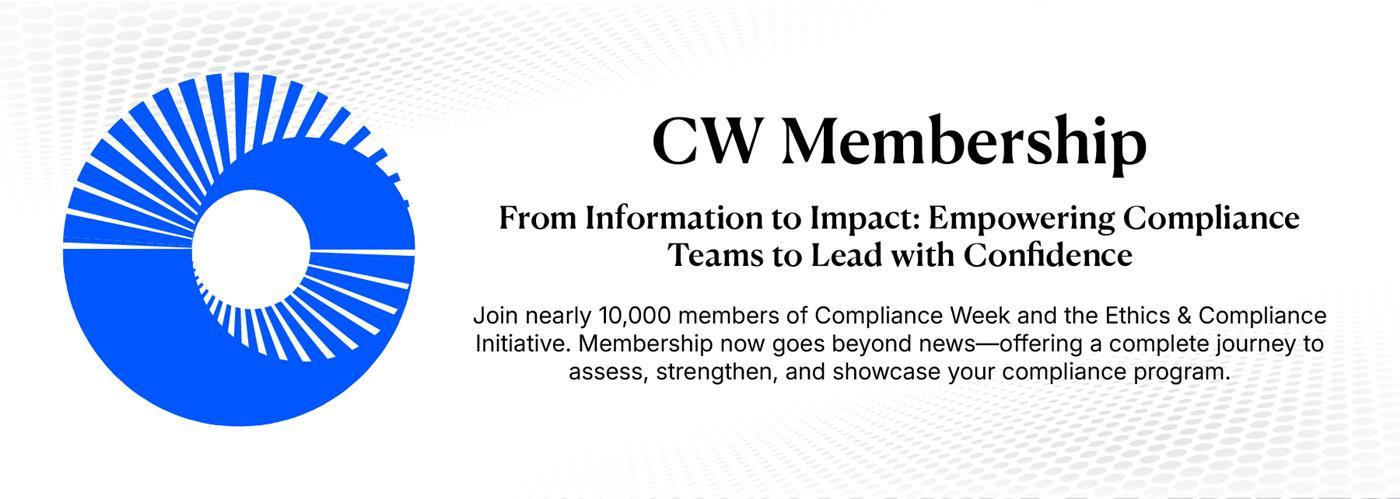- Home
-
News
- Back to parent navigation item
- News
- National Compliance Officer Day 2025
- Accounting & Auditing
- AI
- AML
- Anti-Bribery
- Best Practices
- Boards & Shareholders
- Cryptocurrency and Digital Assets
- Culture
- ESG/Social Responsibility
- Ethics & Culture
- Europe
- Financial Services
- Internal Controls
- Regulatory Enforcement
- Regulatory Policy
- Risk Management
- Sanctions
- Surveys & Benchmarking
- Supply Chain
- Third Party Risk
- Whistleblowers
- Opinion
- Benchmarking
- Certification
- Events
- Research
- Awards
-
CW Connect
- Back to parent navigation item
- CW Connect
- Sign In
- Apply
- Membership
Wells Fargo must do more than pay to redeem fake account scandal
By  Martin Woods2020-08-14T18:09:00
Martin Woods2020-08-14T18:09:00

Wells Fargo is now operating under a different regime, but what have the billions of dollars the bank has spent in attending to the compliance failures that arose out of its fake account scandal delivered? Not enough, posits Martin Woods.
THIS IS MEMBERS-ONLY CONTENT
You are not logged in and do not have access to members-only content.
If you are already a registered user or a member, SIGN IN now.
Related articles
-
 Article
ArticleSenators demand answers from U.S. Bank on fake accounts scandal
2022-08-08T18:13:00Z By Aaron Nicodemus
Democratic senators are calling on U.S. Bank to answer questions before a Senate committee regarding an alleged fake accounts scandal the bank recently paid $37.5 million to settle.
-
 Article
ArticleU.S. Bank fined $37.5M over fake accounts scheme
2022-07-29T17:00:00Z By Aaron Nicodemus
U.S. Bank agreed to pay a $37.5 million fine and to return fees charged to customers related to the bank’s alleged opening of accounts and access of credit reports without their permission, the Consumer Financial Protection Bureau announced.
-
 Article
ArticleWells Fargo to pay $72.6M for foreign currency exchange fraud
2021-09-28T19:42:00Z By Jaclyn Jaeger
Wells Fargo Bank agreed to pay a total of approximately $72.6 million to resolve allegations it fraudulently overcharged hundreds of commercial customers who used the bank’s foreign exchange services.
More from Opinion
-
 Opinion
OpinionThe invisible cost of digital defense on mental health
2025-12-26T12:00:00Z By By Timothy Miller, CW guest columnist
Cybersecurity professionals, particularly those in leadership roles, often face immense pressure and stress due to the constant threat of cyberattacks.
-
 Opinion
OpinionFINRA’s GenAI wake-up call: What compliance professionals must do now
2025-12-24T19:04:00Z By Tom Fox
FINRA’s rules are intended to be technologically neutral. They apply when companies use GenAI or similar technologies in their businesses, just as they apply when companies use any other technology or tool. But what does that mean for a compliance professional using GenAI?
-
 Opinion
OpinionHow to identify and mitigate risks posed by Foreign Terrorist Organizations
2025-12-24T18:55:00Z By Michael K. Atkinson and Caroline E. Brown, CW guest columnists
Since Inauguration Day on Jan. 20, 2025, the Trump Administration has made it a priority to expand the list of designated Foreign Terrorist Organizations.
- Terms and Conditions
- Privacy Policy
- Do Not Sell My Info
- © 2025 Compliance Week
Site powered by Webvision Cloud






